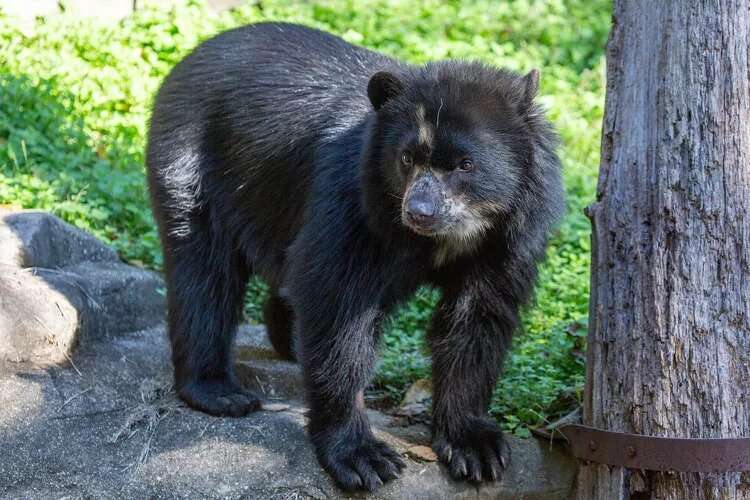Two Andean bear cubs born at National Zoo, a boost to species' vulnerable population

Smithsonian's National Zoo and Conservation Biology Institute in Washington, D.C. is celebrating the births of two Andean bear cubs.
The cubs were born on Nov. 15 to a 3-year-old mother named Brienne and a 9-year-old father named Quito, who are both first-time parents, NZCBI said in a news release. Zoo staff have been monitoring both Brienne and cubs since, with keepers reporting that the newborns are "active and vocal."
Staff at NZCBI are "cautiously optimistic" that the cubs will thrive, the release said.
The births of the two cubs is especially significant because of the Andean bear's vulnerability and relatively small population worldwide. Andean bears are South America's only bear species, NZCBI says, native to the Andes mountain range.
The Andean bear, also called the spectacled bear, is listed as vulnerable on the International Union for Conservation of Nature's Red List of Threatened Species. Estimates suggest there are only 2,000 left in the wild, NZCBI said in its release.
Just under 40 Andean bears are in the Association of Zoos and Aquariums' Species Survival Plan, an initiative of programs that work to manage the breeding and sustainability of certain species.
"These cubs are extremely important to the SSP demographically and genetically since Quito's genes are new to the North American population. We're looking forward to watching Brienne navigate motherhood and, of course, all the cute antics we're bound to see from little bear cubs!" said NZCBI animal keeper Sara Colandrea, who also keeps track of all Andean bears in the North American SSP as studbook keeper and a SSP coordinator.
Names for the two Andean bear cubs born at NZCBI have not been announced yet. In two to three months, veterinarians will perform exams for the cubs and determine their sexes, the zoo said in its news release.
NZCBI has noted in the past, like when two other Andean bear cubs were born at the zoo in December 2012, that "it is difficult to determine the sex at such a young age when genitalia have not fully developed."
The baby bears won't make their "public debut" until early spring, NZCBI said, when they turn three months old. For now, people can see the cubs virtually using NZCBI's Andean Bear Cub Cam or follow updates on the zoo's social media platforms.
The mother, Brienne, came to NZCBI from New York's Queens Zoo in September 2020. Quito, the father, arrived in November 2017 from Germany's Zoo Duisburg.
(c)2022 USA Today
Distributed by Tribune Content Agency, LLC.




















